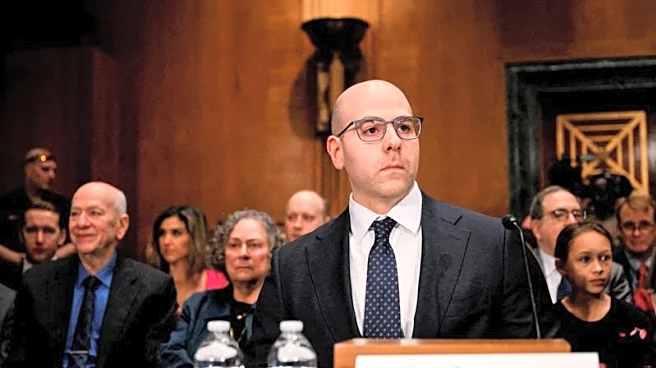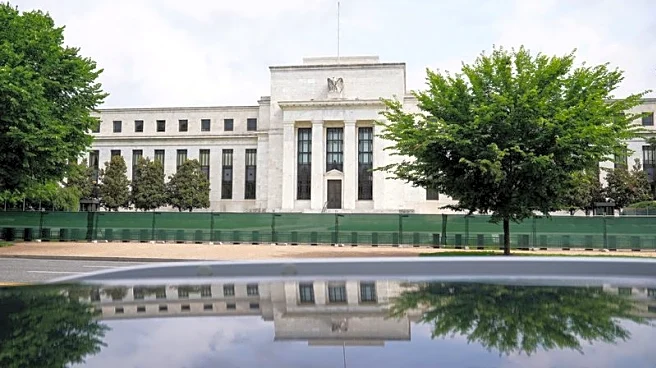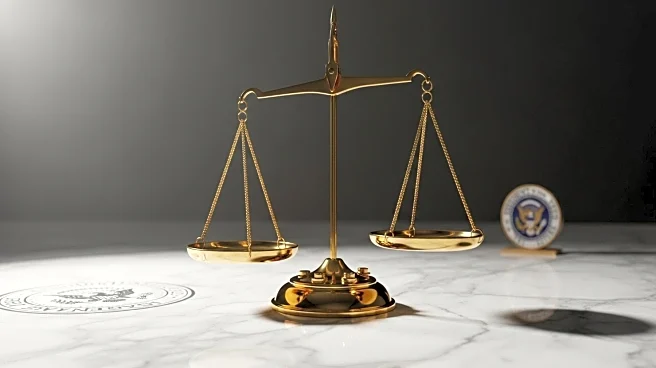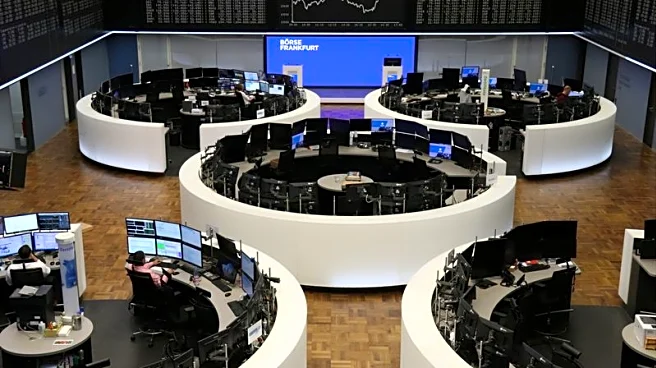What is the story about?
What's Happening?
The U.S. Federal Reserve has commenced its two-day policy meeting, with an interest rate cut widely anticipated. This meeting occurs under significant pressure from the White House, as President Trump has been vocal about his desire for a more substantial rate cut. The Senate recently confirmed Stephen Miran to the Fed's Board of Governors, granting him a vote in the interest rate-setting process. Additionally, Fed Governor Lisa Cook will participate in the meeting following a court ruling preventing her dismissal by President Trump. The financial markets are closely monitoring the Fed's decisions, with expectations of a 25 basis-point cut, though some speculate a potential 50 basis-point reduction.
Why It's Important?
The Federal Reserve's decisions on interest rates are crucial for the U.S. economy, influencing borrowing costs, consumer spending, and overall economic growth. The pressure from the White House highlights the ongoing debate over the Fed's independence and its role in shaping monetary policy. A rate cut could stimulate economic activity, but it also raises concerns about the Fed's autonomy and the potential for political influence over its decisions. The outcome of this meeting could have significant implications for financial markets, businesses, and consumers, affecting everything from stock prices to mortgage rates.
What's Next?
Following the conclusion of the Fed's meeting, the financial markets will react to the announced interest rate decision. Stakeholders, including political leaders and economic analysts, will assess the implications of the Fed's actions on the broader economy. The ongoing dialogue about the Fed's independence and its relationship with the White House is likely to continue, potentially influencing future policy decisions and appointments to the Fed's Board of Governors.
AI Generated Content
Do you find this article useful?














